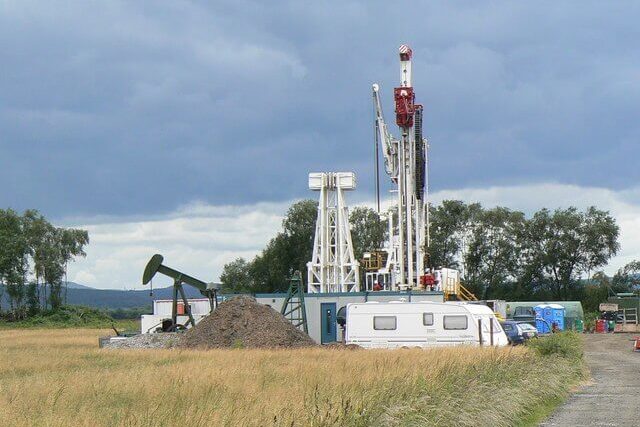
In the course of searching for methane in the Lorraine Basin in northeast France, Professor Jacques Pironon and his team stumbled upon a significant deposit of hydrogen buried approximately 3,000 meters underground.
“It is what we call serendipity,” says Prof Pironon, research director at France’s Centre National de la Recherche Scientifique (CNRS) at the University of Lorraine.
Traditionally, such a discovery might have piqued academic curiosity, but in the current landscape, it sparks considerable interest.
Hydrogen is increasingly viewed as a crucial fuel for the future, potentially playing a pivotal role in transitioning the global economy to net-zero emissions. The allure of hydrogen lies in its capacity to serve as a clean fuel, emitting no CO2 when used in various applications, including industrial processes.
However, a significant challenge looms over the hydrogen narrative—the majority of current production methods are far from environmentally friendly.
The Carbon Trust reports that less than 1% of global hydrogen production is currently emission-free.
Various types of hydrogen production methods contribute to this statistic. Grey hydrogen, produced by splitting methane into carbon dioxide and hydrogen, and blue hydrogen, produced in the same manner but with captured and stored CO2, are prevalent but fall short of being entirely clean.
Black hydrogen, derived from partially burning coal, adds to the carbon footprint.
Green hydrogen, generated through water electrolysis into oxygen and hydrogen, represents the environmentally friendly 1%, but it remains scarce and relatively expensive.
Consequently, any discovery of an emission-free source of hydrogen is met with enthusiasm.
The newfound source, referred to as natural hydrogen, gold hydrogen, or white hydrogen, involves the interaction of groundwater with iron-rich minerals, splitting water into oxygen and hydrogen.
While natural hydrogen has been identified in other locations, such as Bourakébougou in Mali, the French discovery is believed to be the largest naturally-occurring deposit of the gas, potentially amounting to 250 million tonnes—sufficient to meet global demand for over two years.
Despite this promising find, there may be more undiscovered hydrogen deposits globally. The US Geological Survey (USGS) estimates the presence of thousands or even billions of megatonnes, though not all may be easily exploitable.
USGS research geologist Geoffrey Ellis, cautioning about accessibility, suggests that around 100,000 megatonnes of hydrogen could be within reach, representing a supply that could last for hundreds of years.
“This is the global model, and the vast majority is going to be inaccessible – too deep or too far offshore, or in accumulations that are much too small for it to ever become economical to actually access,” he says.
While Mali currently hosts the only facility producing white hydrogen commercially, with an output of around five tonnes annually, efforts are underway to tap into reserves more expansively.
Bill Gates’s Breakthrough Energy Ventures invested $91 million in Koloma, a US start-up targeting white hydrogen reserves, and prospecting firm Getech is exploring potential deposits in Morocco, Mozambique, South Africa, and Togo.
South Australia, a significant focus area, has opened up exploration possibilities for hydrogen. Gold Hydrogen recently announced the discovery of a sizable natural hydrogen field in the state, with plans for production in the near future.
“Since February of 2021, six different companies have applied for and been granted 18 exploration licenses for gold hydrogen,” says Suren Thurairajah, partner, climate and sustainability, at Deloitte Australia.
“The area under permit is 570,000 square kilometres, which is 32% of the size of the state of South Australia.”
Despite these developments, major energy players are exercising caution, with a notable lack of interest in the US due to a limited hydrogen market.
“The big oil companies, I think, are very interested, but they’re currently sitting on the sidelines, watching, taking a bit of a wait-and-see attitude. They’re letting the start-ups take the risk – at this point this is a highly risky venture,” says Mr Ellis.
“Once we see some production data from some of these wells, we will certainly see the major oil and gas companies moving into this space.”
One problem, he says, is that there’s currently a lack of market for hydrogen in the US, reducing the incentive for exploration.
Europe stands out as the global leader in hydrogen project proposals, representing 35% of global investments, according to the Hydrogen Council, while Latin America and North America each account for around 15% of investments.
“So there’s a sort of chicken and egg problem: markets aren’t really developing until they see the supply, and the supply won’t really be developed until they see the market,” says Mr Ellis.
But, he adds: “I think it’s a function of how much effort we put in. If we really decide this is something we need to figure out quickly, I think it could be done.”
——————————————————————————
At Natural World Fund, we are passionate about stopping the decline in our wildlife.
The decline in our wildlife is shocking and frightening. Without much more support, many of the animals we know and love will continue in their decline towards extinction.
When you help to restore a patch of degraded land through rewilding to forests, meadows, or wetlands, you have a massive impact on the biodiversity at a local level. You give animals a home and food that they otherwise would not have had, and it has a positive snowball effect on the food chain.
We are convinced that this is much better for the UK than growing lots of fast-growing coniferous trees, solely to remove carbon, that don’t actually help our animals to thrive.
This is why we stand for restoring nature in the UK through responsible rewilding. For us, it is the right thing to do. Let’s do what’s right for nature!
Donate today at https://naturalworldfund.com/ and join in the solution!

